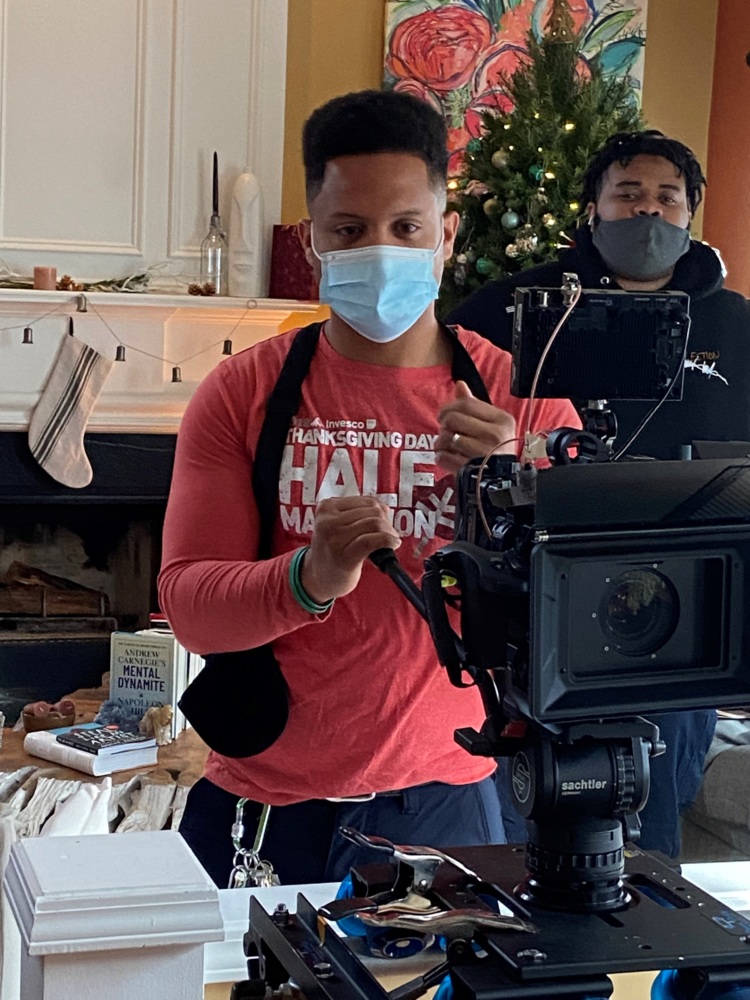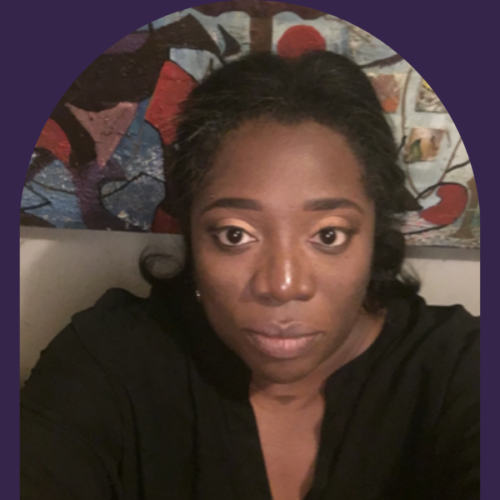Lifting Up Community Stories through Art: Changing the Cultural Narrative to Advance Racial Justice and Increase Vaccine Equity
Program
Highlights

Through a partnership with PHI's Communities Rise Together, CHROMATIC BLACK is galvanizing artists in Black and Brown communities deeply impacted by the pandemic, to capture and tell “COVID LOVE” and “COVID TRUTH” stories—helping to break down barriers, increase access to vaccines, and connect people to other resources, information and support.
10K Black artists, activists, technologists & organizers make up the CHROMATIC BLACK community
60 mostly rural communities throughout the South, & in San Bernardino, CA, & St. Louis, MO
-
Focus Areas
Capacity Building & Leadership, Healthy Communities -
Issues
Workforce Development -
Expertise
Leadership Development, Outreach & Dissemination -
Strategic Initiatives
COVID-19, Vaccine Access & Equity
Abeni Bloodworth, co-founder and narrative strategist of CHROMATIC BLACK (CB), is fostering belonging through one of the most powerful tools since the beginning of time: story. CB is powered by a community of 10,000 Black artists/activists, technologists, community organizers, and journalists working to build cultural power through the reclamation of story as a public common. Through CB’s partnership with the Public Health Institute’s Communities RISE Together, Bloodworth and her colleagues are galvanizing their artists in 60 mostly rural communities throughout the South, and in San Bernardino, CA, and St. Louis, MO, to capture and tell “COVID LOVE” and “COVID TRUTH” stories.

“The cool thing about working with artists is that they are in the habit of spending time in the space of imagination, creativity, and what is possible. We knew if we engaged artists in this civic exercise, we would be able to pattern-disrupt and inject the ‘why’ into the framework of addressing health inequity.” Abeni Bloodworth
Co-Founder and Narrative Strategist, CHROMATIC BLACK
Bloodworth’s experience with RISE resulted from her work with Somava Saha as a fellow of We in the World Network where the conversations centered on racial justice and healing. One of those conversations led to exploring root causes of vaccination hesitancy. She saw the opportunity to connect CHROMATIC BLACK artists with others on the ground to understand the conversations the community was having.
CHROMATIC BLACK deployed local storyteller artists whom Bloodworth describes as being able to “hear between the spaces.” She saw how they could use their own mediums to address their concerns and be in conversation with community through misinformation/disinformation campaigns. Conversations and resulting efforts to overcome vaccine hesitancy came from three pillars of the communities: love, faith, and trust.
The “Golden Thread”
After listening to stories of the people in Atlanta, GA, artists pivoted from the public narrative of the detrimental cost of COVID to the gifts that were most important to the community by being vaccinated—grandparents kissing grandchildren, neighbors discovering neighbors—what Bloodworth described as “the golden thread of love.” The resulting campaign theme became, “Keep Black love alive. Join the vaccinated,” which was also launched in Baton Rouge, LA.
CB also saw the opportunity to work with some of the most deeply respected narrators in Black and Brown communities—faith leaders. “Faith leaders are the most adept at helping us make meaning of crisis,” said Bloodworth.
During COVID shutdowns, pastors refused to be disconnected from their parishioners, creating a “Pulpits to Porches” movement in St. Louis, MO, providing sermons to front yards of followers. By linking to these hyper-local and trusted places and people and galvanizing those without official titles (Bloodworth nods to the powerful “little old ladies at the back of the church”), CB was able to incorporate popup vaccination clinics onsite in partnership with the National Urban League.
One surprising place where CB was able to incorporate popup vaccination sites throughout the American South was expungement clinics, free services to pursue the legal process of clearing criminal records. “If we can have a conversation to resolve warrants and reduce fees for folks, then we can have a conversation about how fragile the public health system is. It’s about trust.”
Bloodworth notes that bringing people together in a hyper-localized context to develop solutions is key. Understanding what’s going on in their lives and the critical issues for those communities are where conversations need to start before ever having a discussion about vaccines.
Bloodworth gives the example of St. Louis, MO, where the hyper-local issue is gun violence. The escalation of violence has become the story told through the media. But the most important part of the story to the local community is how they are working hard to de-escalate violence. A CB filmmaker signed on to tell the story of James Clark, a leader in the city’s de-escalation movement. Through the film, the narrative becomes about efforts to de-escalate violence within families, getting young folks employed, and root causes of how people are hungry and on edge.
Bloodworth says, “Our filmmakers are helping to shift the narrative by highlighting the story that deserves more space in the public common. We need to see ourselves as being able to de-escalate violence. That invites people in.” The screenings of the film in the community are the key to inviting people in where the vaccine conversation can take place and where popup clinics provide access.
Through the power of story, and nontraditional trusted messengers being the conduit, Bloodworth sees new ways to build bridges between community and the public health system. “We might just come out of it with a better system, not just for Black folks, but for all folks,” she said. “We all have the ability and the light to stand up and use our civic power to make the world a better place. This work allows us to knit communities together, fostering connectivity to help ourselves and each other. We are saying, ‘you are important, and we will walk alongside you and connect you with the resources to bring your solutions to life.’”

We might just come out of it with a better system, not just for Black folks, but for all folks. We all have the ability and the light to stand up and use our civic power to make the world a better place. This work allows us to knit communities together, fostering connectivity to help ourselves and each other. We are saying, ‘you are important, and we will walk alongside you and connect you with the resources to bring your solutions to life.’Abeni Bloodworth
Co-Founder and Narrative Strategist, CHROMATIC BLACK
Communities RISE Together supports COVID vaccination efforts in African- American, Asian-American/Pacific-Islander, Latinx, Native-American, rural, immigrant/migrant and low-income, older adult populations. Communities RISE works on the ground in more than 220 counties in 27 states in communities with low vaccination rates by calling on the capacity of 2,400 community-based organizations who have reached over 100 million people across the nation. The initiative is a collaboration between WE in the World, the Well Being in the Nation (WIN) Network and Public Health Institute.
A version of this impact story first appeared on the ReThink Health blog.
Work With Us
You change the world. We do the rest. Explore fiscal sponsorship at PHI.
Support Us
Together, we can accelerate our response to public health’s most critical issues.
Find Employment
Begin your career at the Public Health Institute.
